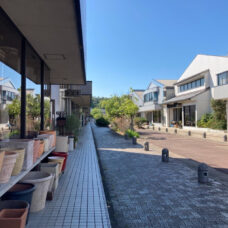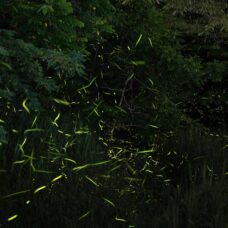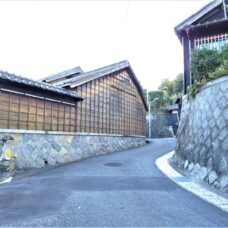One of the three major canals in Japan.
Handa Canal is one of the three major canals in Japan along with Otaru Canal in Otaru City, Hokkaido, and Horikawa Canal in Nichinan City, Miyazaki Prefecture.
The Handa Canal was opened about 330 years ago in the middle of the Edo period.
In Handa, sake brewers began to increase in number in the early Edo period, and by the mid-Edo period, the area was popularly known as “Chugoku-shu” (Chinese sake) because of its location halfway between Edo and Kamigata, and became so popular that it was responsible for 30% of the city’s sake.
In the 1800s, the Mitsukan Group (Nakano Vinegar Store), whose warehouses still stand today, and Nakano Shuzo, known for “Kunimori,” were founded. The area along Handa Canal became a busy port with breweries and ships bound for Edo and Kansai.
Handa-born sake lees vinegar played a role in the birth of Edomae-zushi.
The first up-and-coming brewer in the Handa Canal area is Nakano Matazaemon I, the founder of Mitsukan. Matazaemon noticed the “haya-zushi” sushi that was becoming popular in Edo (Tokyo) and came up with the idea of making vinegar from locally available sake lees instead of expensive rice vinegar, and after much trial and error, he established the process. During the boom of nigiri-zushi in Edo (Tokyo), kasuzu (vinegar made from sake lees) quickly gained a reputation for its delicious taste and price, and spread throughout the country. Matazaemon’s invention of kasuzu supported Japan’s sushi culture and created a local specialty that could not be found anywhere else.
Walking in a town full of Edo and Meiji Periods
The Handa Canal area is a good place to wander around.
First, visit the Mitsukan Museum of Miyujiam (MIM), which contains the entire history of Mitsukan. Walking north along the canal, you will see the former residence of the Nakano Hanroku family, which prospered in the shipping and brewing industries. It is believed to have been built in 1889, and the French restaurant “Hanrock” and “Baumkuchen Laboratory” are currently in operation. The adjacent “Kunimori Sake no Bunka-kan” is a museum of sake brewing in a 200-year-old sake cellar. Make a U-turn and visit the Oguri Family Residence, a registered tangible cultural property. The Oguri Family Residence is a store and residence of the Oguri family, a wealthy merchant in the brewing industry in Handa. Don’t miss the heart-shaped trunk of a white mokkou rose in the garden every April. Cross the Genpei Bridge to the other side of the Handa Canal. The Kikkoutomi brewery is located here. Founded in 1892, it is said to be the first soy sauce brewery in Aichi Prefecture after sake and miso brewing.
The nearest station, Handa Station on the JR Taketoyo Line, was the earliest railroad line in Aichi Prefecture. Visitors can see a steam locomotive (SL) at the Railway Museum, and the oldest wooden bridge in Japan (currently being dismantled for relocation and preservation) will also be on display.
Handa Canal is still a picturesque scenery
The canal is now a much more sophisticated place than it was in 1943, when there were no levees and the breweries were still in use, and the black walls were typical of Handa.
A few years ago, a new summer tradition was born on this canal. The shimmering beads of light on the water’s edge create a magical scene, and the local sake and seasonal ingredients, which have been handed down for three centuries, make for an exceptional treat. You should definitely come and enjoy it.
Kura no Machi Area (Handa City)
This page was translated at DeepL.










